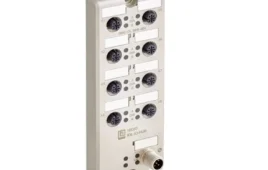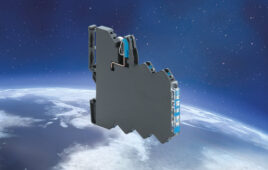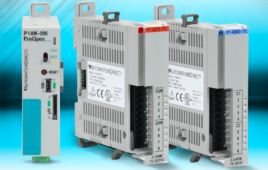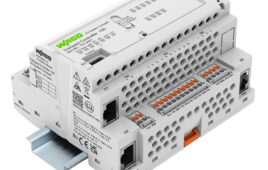MINNEAPOLIS, MN — Honeywell (NYSE: HON) introduces its
TruStability™ Silicon Pressure Sensors comprised of the HSC (High Accuracy Silicon
Ceramic) Series and SSC (Standard Accuracy Silicon Ceramic) Series that offer customers three key benefits not found in other silicon pressure sensors currently available:
? Industry-leading stability helps prevent drift over time or from temperature and
humidity extremes; often eliminates the customer’s need to calibrate after mounting
to the printed circuit board (PCB), and also the need for the end-user to calibrate the
device
? Temperature compensated and calibrated to provide an extremely tight accuracy
specification
? Modular and flexible design offers a wide variety of package styles and options, all with the same industry-leading performance specifications

The HSC Series is designed to provide an industry-leading ±1 % total error band
specification, compensated across a 0 °C to 50 °C [32 °F to 122 °F] temperature range. The SSC Series is designed to provide a ±2 % total error band specification, compensated across a wider -20 °C to 85 °C [-4 °F to 185 °F] temperature range.
The HSC and SSC Series’ footprint is very small in comparison to most silicon
pressure sensors, including the current Honeywell portfolio. Despite their small size, they are temperature compensated, calibrated, and provide an amplified signal, typically allowing the customer to remove the components associated with signal conditioning from the PCB to increase space and reduce costs often associated with those components (e.g., acquisition, inventory, assembly). This integrated capability often eliminates problems that could occur from having multiple signal conditioning components across the PCB.
Both Series offer the option of analog or digital outputs. Digital ASIC output in either I2C or SPI protocols from digital sensors accelerates performance through reduced conversion requirements and the convenience of direct interface to microprocessors or microcontrollers. Custom calibration ranges, output options, power options (3.3 Vdc or 5.0 Vdc), pressure types (absolute, differential, gage, compound), pressure ranges (1 psi to 150 psi), a wide array of mounting options (lead through SIP, DIP, or surface mount technology), and multiple package options provide support for many unique applications.
Honeywell
www.honeywell.com
::Design World::
Filed Under: Sensors (pressure), TEST & MEASUREMENT





Tell Us What You Think!